 alt="Market Days in Menglian and Townships, Puer"
/>
alt="Market Days in Menglian and Townships, Puer"
/>
Niuluohe Tea Plantation in Jiangcheng County, Puer
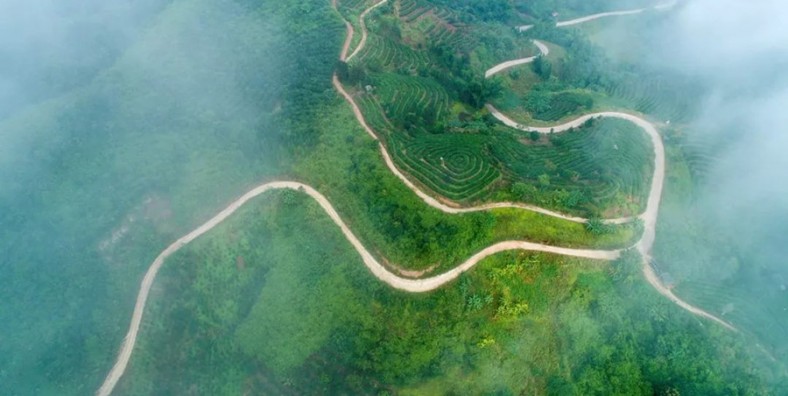
Chinese Name: 江城牛洛河茶园
English Name: Niuluohe Tea Plantation in Jiangcheng County, Puer
Chinese Pinying: Jiang Cheng Niu Luo He Cha Yuan
Keywords: Mountain, Puer Tea, Ancient Tea Tree
Location: Located in Jiangcheng County,Puer
Admission Fee: Free
Opening hours: All day
Best Time To Visit: All year
Jiangcheng Niuluohe Tea Plantation
Niuluohe Tea Plantation is located in the south of Jiangcheng County, Puer City, Yunnan Province. It borders Laos and covers an area of more than 100,000 mu. It is surrounded by virgin forests and produces pollution-free tea. It is the ideal environment for organic tea. Niuluohe tea industry was established in September 1987. The existing ecological tea garden covers an area of 18,000 mu (including 5,000 mu of cloned tea gardens), 1,000 mu of coffee gardens, more than 8,000 mu of economic forests, more than 4,000 tea workers, and an annual output of 3,500 tons of tea. It is a professional tea enterprise integrating production, processing and sales. In the past 20 years, Niuluohe tea industry has carefully created the brand of “Niuluohe” and “Jiangcheng Yueyuan Tea”, which are jointly watched by the tea industry.
Nutritional value
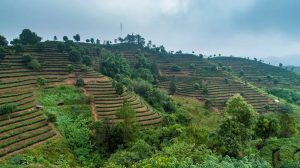
Tea is rich in nutrients and contains many ingredients, nearly 400 species. Most of them are caffeine, theophylline, theobromine, choline, astragalus, flavonoids and glycosides, tea tannin, catechins, terpenes, phenols, alcohols, aldehydes, acids, esters, Aromatic oil compounds, carbohydrates, multivitamins, proteins and amino acids. Tea also contains calcium, phosphorus, iron, fluorine, iodine, manganese, molybdenum, zinc, selenium, copper, antimony, magnesium and other minerals. These ingredients in tea are mostly beneficial to the human body. Its main function is to stop diarrhea, refreshing, dispelling, facilitating urine, removing phlegm and relieving cough, clearing eyes and getting fire down, eliminating summer phlegm, reducing inflammation and detoxification. Since tea is of great significance for the prevention and treatment of human diseases, the folk “open seven things” (Match, rice, oil, salt, sauce, vinegar, tea) include tea, and there is also “no day without tea”.
Historical folk culture
Jiangcheng tea has always been one of the important source of high quality Pu’er tea in Yunnan. Historically, Jiangcheng tea production has undergone a process of germination, prosperity, decline and development. According to the records of the history, the two generations of the Ming and Qing Dynasties, in addition to the “tea-horse road”, it also radiated four “tea horse avenues” centered on Pu’er. One of them passed through Jiangcheng, the “Tea Horse Avenue” from Pu’er to Laizhou, Vietnam. It was transported by Pu’er from Jiangcheng County to Laizhou, Vietnam, and then transferred to Europe. During the reign of Emperor Guangxu in the Qing Dynasty, there were tea cultivation and listing in the city of Jiangcheng County. In the early years of the Republic of China, local merchants acquired Mao Tea, which was processed and shipped to Vietnam and Mengla. According to “Jiangcheng County”, there were more than 10 tea shops opened during the Jiangcheng County Republic of China. At that time, the Jingcheng Tea House, located in Jiangcheng, was highly regarded for its refined high-grade Pu’er tea and exported to overseas.
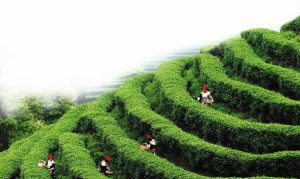
Tea Exports
When Jiangcheng County had a large number of exports, the export sales of tea had reached 1,700 per year. After 1949, Jiangcheng Tea House produced Pu’er Round Tea and sold it to Vietnam, Hong Kong and Shanghai. Pu’er tea lovers in Hong Kong, Macao and Taiwan particularly like Pu’er tea produced in Jiangcheng, Puer City, Yunnan Province, such as “Jiangcheng Round Tea”, “Jiangcheng Iron Cake” and “Jiangcheng Chunjian”.
Production method
1, Cool: lose some of the water in the fresh leaves. During the water walking process, some aroma substances are formed, and some of the macromolecular ester-capacitative sugars are hydrolyzed into small-molecule-capacitable sugars.
2, Green Removing: the raw materials Pu’er raw tea processing is Yunnan big leaf species, green tea. The green tea is mostly fried in a pot. Because of the high water content of the large leaf, it must be combined with squeaking when it is removed, so that the tea loses water evenly, and the high temperature quickly inactivates the enzyme activity to stop the oxidation of polyphenols. Evaporation of a part of the water, which is good for smashing into strips.
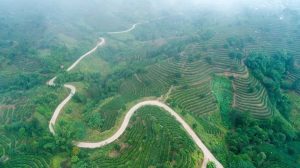
3. Smash: Break the tea cells to ensure that the tea juice is fully leached during brewing. According to the old and tender raw materials, the tender leaves are light and short, and the old leaves are heavy and long. It is advisable to master the basics.
4. Drying: The dried tea leaves are naturally dried under the sunlight, and the organic matter and active substances in the tea leaves are retained to the utmost extent. The dried tea leaves have the largest cell pores, which is beneficial to generate a large amount of heat during the fermentation process.
5. Autoclaved: The dried tea leaves are steamed and placed in different molds for compression molding.
6. Drying: The water content is controlled below the water content that can be safely stored. Generally, the Pu’er tea is required to have a water content of less than 10%.
How to Get to Jiangcheng Niuluohe Tea Plantation
1. By Air
There are no airports in Jiangcheng County. Visitors can take a plane to Simao District, Puer, then take a long-distance bus to Jiangcheng County.
2. By Train
Pu’er Railway Station is the middle station of the Yumo Railway under construction and an important station for the Laos section of the Trans-Asian Railway. It is expected to be put into use by 2020.
3. By Long-distance Bus
There is the Passenger Station in Jiangcheng County for people to get in.
4.Jiangcheng – Jiangcheng Niuluohe Tea Plantation
Take the taxi or rent a car to go to the Jiangcheng Niuluohe Tea Plantation.
Where to Stay in Jiangcheng County
Jiangcheng County is a county under the jurisdiction of Pu’er City, Yunnan Province, China. There are many hotels around Jiangcheng County. Yunnan Exploration will provide the best hotels for you. The recommended hotels as follows:
1. Jiangcheng Mancheng Business Hotel(江城曼城商务酒店)
Add: Sanjiang Avenue, Jiangcheng Hani and Yi Autonomous County, Pu’er (普洱市江城哈尼族彝族自治县三江大道)
Tel: 0879-3831777
2. Jinma Vacation Hotel(金马假日酒店)
Add: Sanjiang Avenue, Jiangcheng Hani and Yi Autonomous County, Pu’er Prefectur (普洱市江城哈尼族彝族自治县三江大道)
Tel: 0879-3729999
3. Xinhong Grand Hotel(鑫宏大酒店)
Add: No.59 of Lianyi Road, Sanjiang Avenue, Jiangcheng Hani and Yi Autonomous County, Pu’er Prefecture (普洱市江城哈尼族彝族自治县联谊路59号)
4. Dingsheng Hotel(鼎盛大酒店)
Add: Next to Xinhong Parking Lot, No. 60 Lianyi Road, Jiangcheng County
Tel:0879-3829777
5. Sanjiang Budget Hotel(三江快捷酒店)
Add: Gate of Tianshi Community, Opposite of Xindaxin No. 15 Sanjiang Avenue, Jiangcheng County
6. Tianhao International Hotel(天豪国际大酒店)
Add: Floor 1, Sanjiang Building, Sanjiang Avenue, Jiangcheng County
7. Jiangcheng Mancheng Business Hotel
Add: Building 1, South Zone of Sanguo Trade City,Sanjiang Avenue, Jiangcheng County
Tel: 0879-3831777
Best Time to Visit
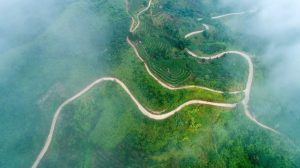
It is suitable to visit Jiangcheng County all year round. Like many other cities in Yunnan, Jiangcheng is a place where the seasons are like spring. There is no cold, no heat, warm and humid, especially suitable for human habitation, so you can go to Jiangcheng at any time.
Recommended Tour
When you traveling Pu’er, Jiangcheng County is a good place to be put on your list. It can be joined in whatever your Pu’er tour or Yunnan Tour.
11 Days Yunnan Ancient Tea-Horse Road Tour with Puer and XishuangBanna Tea Culture Exploration
14 Days Southwest Yunnan Tea Culture Tour from Xishuangbanna to Puer and Lincang
Travel Tips
1.There are many ethnic minorities living here, such as Lahu, Hani, Wa and Yi. Varied customs make it a colorful city. Eating habits, ceremonies, costumes and folk legends can all be a strong attraction for people who are visiting. In addition, the city is the hometown of the well known Puer Tea, and the local people have diversified ways of handling tea, such as bamboo tube tea, cold tea dish, earth-pot tea and baked tea; all of which you should try.
2.Enjoying a plateau monsoon climate at low latitude, the region is affected by the Indian Ocean and the Bay of Bengal. Therefore, the main features of its weather are mildness and humidity without strong winds.
3.Special Local Products: Puer Tea, bamboo shoot, edible fungi, purple rice, mango.

 7 Days GolfingTour
7 Days GolfingTour
 8 Days Group Tour
8 Days Group Tour
 8 Days Yunnan Tour
8 Days Yunnan Tour
 7 Days Shangri La Hiking
7 Days Shangri La Hiking
 11 Days Yunnan Tour
11 Days Yunnan Tour
 6 Days Yuanyang Terraces
6 Days Yuanyang Terraces
 11 Days Yunnan Tour
11 Days Yunnan Tour
 8 Days South Yunnan
8 Days South Yunnan
 7 Days Tea Tour
7 Days Tea Tour
 8 Days Muslim Tour
8 Days Muslim Tour
 12 Days Self-Driving
12 Days Self-Driving
 4 Days Haba Climbing
4 Days Haba Climbing
 Tiger Leaping Gorge
Tiger Leaping Gorge
 Stone Forest
Stone Forest
 Yunnan-Tibet
Yunnan-Tibet
 Hani Rice Terraces
Hani Rice Terraces
 Kunming
Kunming
 Lijiang
Lijiang
 Shangri-la
Shangri-la
 Dali
Dali
 XishuangBanna
XishuangBanna
 Honghe
Honghe
 Kunming
Kunming
 Lijiang
Lijiang
 Shangri-la
Shangri-la
 Yuanyang Rice Terraces
Yuanyang Rice Terraces
 Nujiang
Nujiang
 XishuangBanna
XishuangBanna
 Spring City Golf
Spring City Golf
 Snow Mountain Golf
Snow Mountain Golf
 Stone Mountain Golf
Stone Mountain Golf













 What Our Customers Say?
What Our Customers Say?
